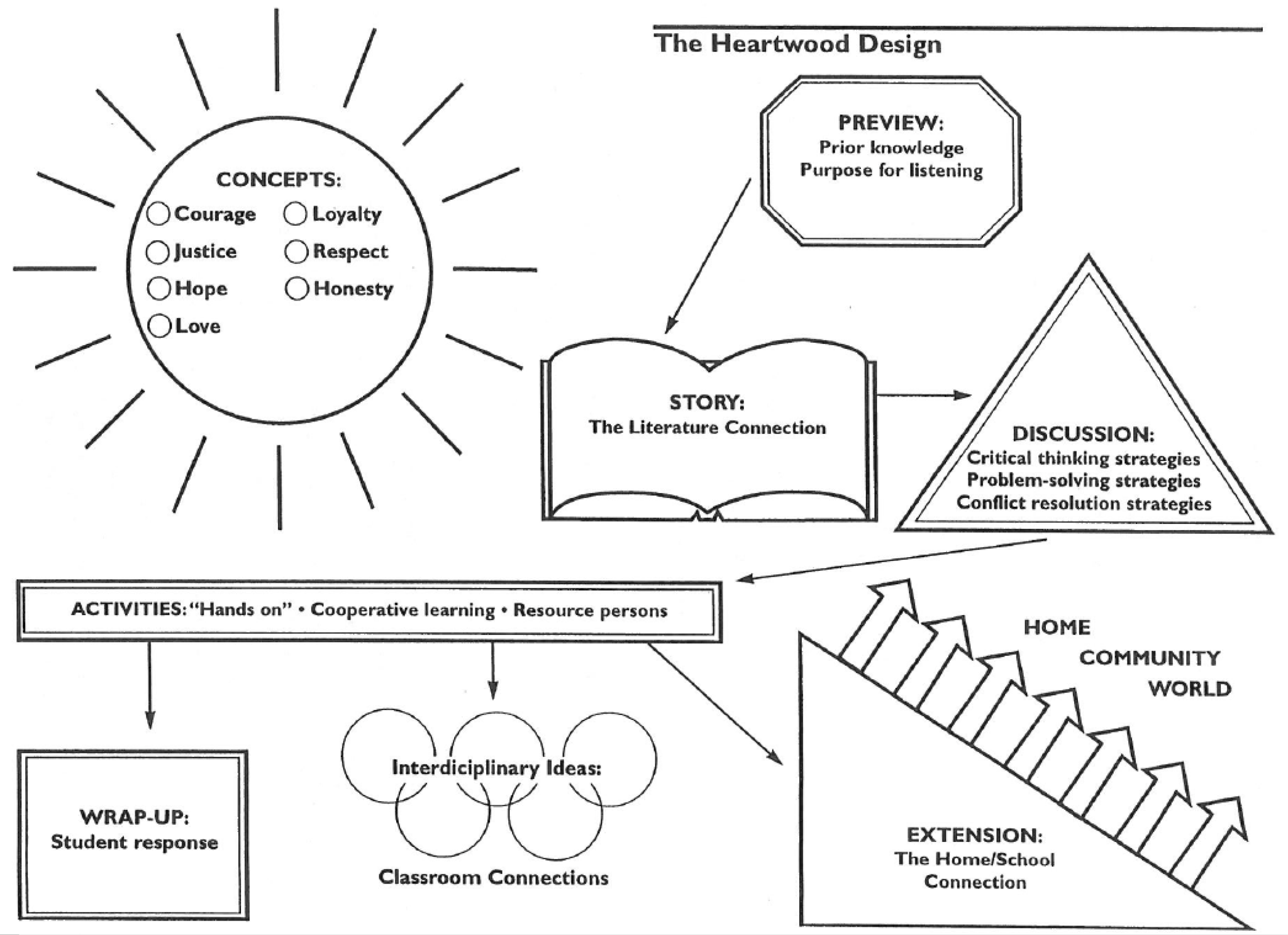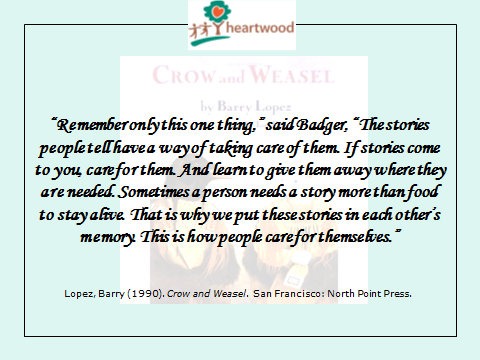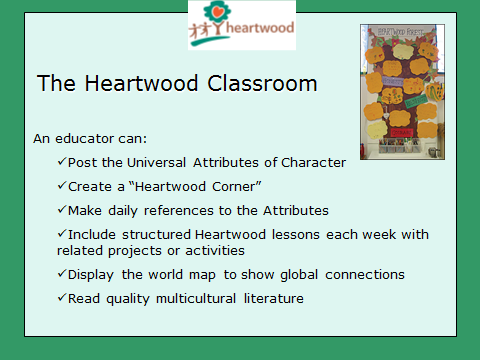Universal Values via Quality Literature
The group researched values that were common to all people and selected seven for emphasis: courage, loyalty, justice, respect, hope, honesty, and love. Adding an ethics focus to the already packed curriculum became their next question, and, as it turned out, the easiest one to answer. As teachers and parents, they made time each day to read aloud to the children. So with this focus, their ideas centered on children's literature. They began the search for examples of quality literature with ethical content, using the following criteria:
- The children's books should accurately reflect diversity of culture and gender.
- The values must be presented in a positive manner.
- The characters should be people, not animals, in order to represent a fictional role model.
- The selections must contain exceptional illustrations to help capture both auditory and visual learners.
The idea was to integrate Heartwood into existing curricula, especially reading, language arts and social studies. For each book, lesson cards were developed that initially asked the learners to draw on their own prior knowledge of the value before listening to the story. In making the literature selections, they were guided by author Margaret Hodges' advice that a good book touches the head and the heart. Books were chosen that enabled students to become emotionally involved in the story. Discussion questions were written that utilized critical thinking and problem solving. Hands-on, cooperative learning and group activities were developed that reinforced the selected attribute(s).
For all lessons, children were asked to personally reflect on the value; this generally was incorporated into a journal writing activity. With each new story, the Heartwood team hoped that their understanding of the attributes would become clearer. A variety of interdisciplinary activities were also suggested that corresponded with the attribute and each book's content. For example, if a story's setting was in Japan, then students would locate this country on a world map. The transition from universal to private or personal values occurred within the extension. The final portion of the lesson card enabled students to connect and extend the attribute into the home through communication and projects that further developed the private margins of the values within the existing family structure. As students reflected upon and internalized these universal values, Ellie, Pat, Barb, and Patti believed that everyone within their own learning communities would be provided with the opportunity to communicate with one another as they developed the respect and trust necessary for caring for each other.








